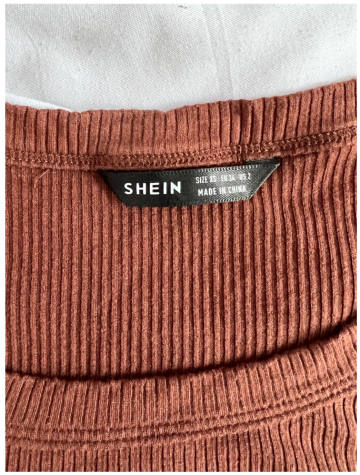Gorka: Is Fast Fashion Crashing Like a Train Wreck or Soaring?
March 16, 2022
Fast fashion is a term that rose to popularity in recent years. Fast fashion is inexpensive clothing produced by brands in response to the latest trends. However, it isn’t all good as it sounds.
There are many downsides to fast fashion, such as clothes being made by child laborers and products that are made poorly which tend to rip or not last long. A great number of fast fashion brands have been accused of stealing designs from small businesses and face accusations that clothes are being produced from toxic materials that are unsafe for the environment.

“Fast fashion creates fashion trends that negatively impact our clothing consumption and how we view clothes,” exclaimed Nonnewaug junior Sophia Dmitriyeva. “If we keep buying cheap quality clothes, the more clothing waste builds up because of how fast fashion trends are cycling through on social media.”
Fast fashion dates back to the 1990s and 2000s, when low-cost fashion took off. Brands such as Shein, Topshop, and Fashion Nova captured looks and designs from the largest and most luxurious fashion houses, and remade them quickly, selling them for cheap.
For instance, a popular TikTok influencer buys a shirt from a luxury brand such as Versace. She makes a TikTok wearing the shirt and people want to buy it, but it’s extremely expensive, so brands such as Shein make a cheaper alternative so people can purchase its likeness. Once the trend is over, the shirt gets dumped, another trend starts and the cycle happens again, leaving the now undesirable trend to waste in landfills.
“I feel that fast fashion is dramatically impacting the industry negatively,” stated NHS junior Emily Crawford. “It has a huge environmental footprint and it utilizes a large amount of energy and resources, depending on toxic chemicals and fabric dyes. It also is a huge contributor to the world’s carbon emissions, which is detrimental.”
According to the climate action news page by Princeton University, 57% of clothing ends up in landfills, which soon start to pile up. There are many toxic substances that are released as a result of the burning landfill. It is safe to say that fast fashion is anything but fashionable.





























fanaccount2039 • Mar 22, 2022 at 12:25 pm
this is so cool !!!
MegiFan1 • Mar 18, 2022 at 2:05 pm
gurl this is so yassss!!!! omg yessss
Britney spears • Mar 18, 2022 at 10:43 am
oops i did it again! I’ve read this article 16 times!!!! it’s amazing!!!!
william shakespeare • Mar 18, 2022 at 10:39 am
love it megi!!
Pete Davidson • Mar 18, 2022 at 10:37 am
Yuh Megi. This is a great article!
Tom Holland and Zendaya • Mar 18, 2022 at 8:34 am
Great article Megi!
James Patterson • Mar 18, 2022 at 8:11 am
great article!
Kim Kardashian • Mar 18, 2022 at 7:53 am
Wow ! I don’t think people realize how bad fast fashion is ! Thank you Megi for this incredible article !!